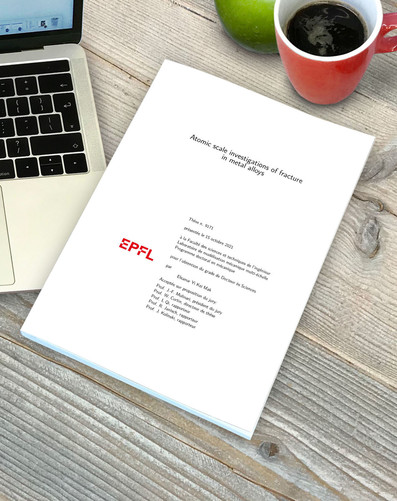
The demand for metal alloys with superior structural performance in industrial applications continues to increase, as does the need for more-energy efficient materials and methods. Many materials that are otherwise attractive for structural applications are limited by poor fracture properties at low and moderate temperatures, and these properties limit their formability and suitability for fracture-critical/energy-absorption applications. Ductility and fracture toughness are connected to intrinsic ductility and the competition between brittle cleavage and ductile dislocation emission mechanisms at an atomistic crack tip in crystalline metals – these crack tip mechanisms are thermally-activated processes and are each associated with an energy barrier connected to the critical stress intensity. Pure magnesium (Mg) is an attractive metal for structural applications but has poor fracture properties. Although dilute alloying with yttrium (Y) improves the overall ductility of a crack due to local solute-induced deformation at the crack tip, dilute alloying is unable to fundamentally change the brittle nature of the base Mg so basal-plane cleavage remains strongly preferred. Multicomponent, single-phase, polycrystalline High Entropy Alloys (HEAs) have recently emerged as a new class of metal alloys, and some refractory bcc HEAs show excellent strength retention up to very high temperatures but low ductility at room temperature (RT). A RT ductility criterion proposed based on the elemental metals demonstrates agreement with experimental trends in ductility vs. composition across a range of existing HEAs and is used to identify new compositions with the potential for RT ductility across the large composition spaces of two alloy families. Ductilization at RT is possible only if the intrinsic cleavage and emission energy barriers are comparable, but many bcc HEAs have emission barriers that are very large and insurmountable on average compared to the cleavage barriers. Significantly reduced local emission energy in a random system is demonstrated with a model equiatomic MoNbTi random alloy, signifying the potential for local crossover from brittle to ductile behavior even if a material is brittle on average. The atomic misfit volume is a critical energetic contribution with the potential to introduce large variations in the emission energy, and ongoing work involves quantifying the connection between the stochastic compositional disorder with these variations, which is necessary to develop an analytic theory.
Embargo until July 2022
